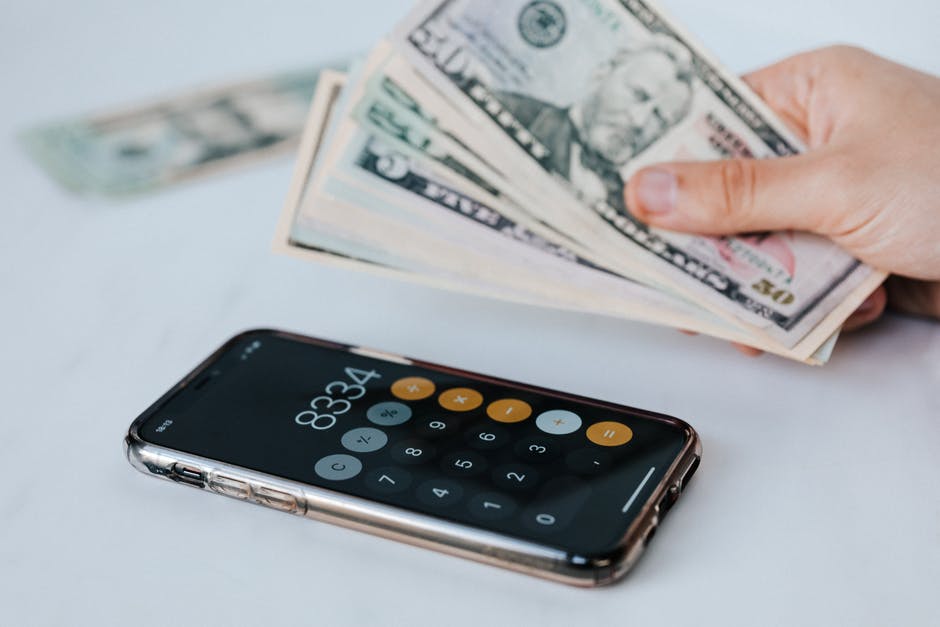What Is DevOps and Why Is It Important?
Posted on September 18, 2020 by Logo Design Tips and Tricks

Worldwide IT spending has pushed past $3 trillion and continues to grow. In the current business market, more companies are being asked to think about their IT even more. Remote work and telecommuting seem to be here to stay, but they’ll put more demand on IT teams.
It’s time for business leaders like you to rethink how you handle IT. There are plenty of different frameworks out there, including DevOps.
What is DevOps, and how could it benefit your business? This guide has everything you need to know.
What Is DevOps?
DevOps is a portmanteau of “development” and “operations.” In short, it’s an IT strategy that combines development and operations.
Traditionally, development and operations were separate from each other. Development focused on the creation of new software, apps, or technology solutions.
Operations, by contrast, was focused on the implementation of those solutions. Operations ensured they kept running from day-to-day.
DevOps evolves from the desire for more agile approaches to IT. Agile frameworks allow teams to respond faster, reducing the time from concept to product. DevOps also draws on ideas from manufacturing like “just in time” production.
How Does DevOps Work?
In essence, DevOps rolls development and operations together to create a continuous cycle. The development side rolls out new software, which is then implemented by operations.
As operations are ongoing, feedback informs continued development. New features, updates, and more can be rolled out to the already-operating solution.
This results in a faster and more responsive development cycle. Instead of waiting for a new version, the current one is continually updated and improved.
The feedback from operations allows development to focus on what to improve. They can then roll it out in pieces. This works with more agile approaches to software development, which rolls out updates in blocks.
This is a direct contrast to older strategies. In the past, software solutions would need to be rebuilt from the ground up. Today, developers can update one piece of the solution, then swap it in without interrupting operations.
What Are the Benefits of DevOps?
Adopting the DevOps framework is much more efficient. It allows continuous improvement once a product has already been rolled out.
In older models, you’d finish working on a software solution. Then you’d immediately go back to the drawing board to begin the next version. Developers built monolithic pieces of software in a way that meant each piece would have to be rebuilt for the next version.
Today’s approaches to software development allow for much more flexibility. Developers can update modules and parts of the program as needed, often while the app is still in use.
This allows teams to work on what needs to be updated in response to operating issues or user feedback. It also means releases are much faster. Development is more focused, so continuous improvement becomes possible.
This is more efficient, and it allows for innovations to roll out on shorter schedules. This improves your ability to compete.
Better Collaboration and Smaller Teams
DevOps also tends to result in smaller teams. The development and operations teams are often combined. Team members perform both roles.
This improves collaboration between the two teams, which can reduce friction and issues. An example is easier operations.
Since the dev team is also operations, they’re aware of how they should handle the program. Since they’re more familiar with the code, they’re also in a better position to troubleshoot if it doesn’t work as expected.
Their greater knowledge leads to faster implementation and resolution of issues. The team may be able to fix issues themselves or move an issue into development faster.
The use of DevOps tools that allow for continuous updating of programs also help. The closer collaboration between the two teams makes for more responsiveness and better user experience.
It can also reduce your overhead since it minimizes the IT team size. What’s more is that better collaboration leads to fewer problems, which can lead to higher growth and revenue.
What Do You Need for DevOps?
DevOps is a method, not a specific program. Still, you’ll need to be able to hire people who have some background with the method.
You may hope to hire a DevOps engineer, which is a professional who has experience using the DevOps method in software engineering. You can look for DevOps certification as proof of knowledge of this strategy.
An example is SAFe DevOps certification. To achieve this certificate, professionals need to know how to use the Scaled Agile Framework. They must also show other skills and knowledge.
Moving DevOps Beyond Software
Like other agile frameworks, DevOps doesn’t just apply to software development. It may be most useful for the IT team, but the philosophy behind it can be applied to other parts of your business.
Other teams in the IT department may be able to benefit from the DevOps framework. Cybersecurity might benefit from adding new systems and continuously upgrading the security features.
Another example might be website development or even IT infrastructure itself.
What about outside of the IT department? DevOps is relevant for any kind of product development cycle.
The development team can assist with troubleshooting and customer use. They can then upgrade designs on an ongoing basis, using feedback.
You can also apply it to departments like marketing or sales. A new campaign could be introduced. Using metrics, you can tweak it to deliver better results.
Feedback received during the current campaign can inform the development of new campaigns.
The Right IT Philosophy for Growth
You asked, “What is DevOps and what can it do for my business?” Now you can see how useful it is when you want to develop an app. It’s also a helpful philosophy to take to almost any part of your business.
Looking for more ways the right approach to tech can help you grow your business? You’re in the right spot! Check out the archives for more great ideas and tips.
7 Tips to Get the Most Out of Your Business Meetings
Posted on September 18, 2020 by Logo Design Tips and Tricks

There are 24 hours in each day, but sometimes you feel like it’s less than that. With major projects and responsibilities, you wish you could buy a few extra minutes here and there.
While you can’t buy extra time, you can save it.
By using your time in business meetings productively and efficiently, you’ll end up having more to use later.
Read on for seven strategies to help you get the most out of your business meetings.
1. Determine Purpose
Purpose is the key to productivity for your business meetings. Without purpose, it’s easy for people to get sidetracked and accidentally waste time.
For example, your purpose could be, “Come up with ideas for (name of the project)” or “Analyze customer feedback.”
2. Have a Plan
Good planning can yield great results. Set goals for what you intend to accomplish.
If you simply need to communicate a few key facts, then send them out in an email for people.
Just because you have a meeting doesn’t mean you need to require everyone to attend. Sometimes smaller groups can be better for discussion.
3. Schedule More Time Than You Need
While you may be trying to save time, ensuring that you schedule enough of it for your business meetings is just as important.
It is better to overestimate than to underestimate how much time you need.
This doesn’t mean you have to use the whole time you schedule, but doing so will simply ensure that one won’t be rushed and good conversation won’t be interrupted simply due to time.
If you want to make your meeting scheduling process more efficient, then consider these helpful solutions!
4. Spark Conversation
Another key feature of having a good meeting is to spark inspiration for conversation. Choose a time in the day when you and your employees feel the most energetic and creative.
If you can’t meet at the ideal time, then consider offering things like healthy snacks, coffee, or peppermint tea. The more energy you and your team have, the more likely great ideas are be thought of and shared.
5. Be a Good Listener
The reason why you’re having your meeting is to gain input from your team. Make sure to take the time to listen to those around you.
Cultivate positive discussion, and establish a welcoming atmosphere where everyone can share their ideas.
6. Communicate Effectively
Business meetings are all about communication. While you listen, also make sure you communicate effectively.
Make sure to show respect and appreciation for everyone’s ideas, even if they have a bad idea that won’t work.
This will help make people more comfortable and less afraid to share their thoughts.
7. Cultivate a Positive Atmosphere
Cultivating a positive atmosphere is key to having truly effective business meetings.
Ensure people in your meeting are treating one another with respect in their discussions, and make sure you smile to establish friendliness.
Accessing the Potential of Your Business Meetings
Every hour matters in your day. Make sure to consider these tips so you can access the full potential of your business meetings.
Looking for more business advice? Then feel free to explore the rest of this website for more articles!
Consolidation or Settlement: Which Debt Help Option is Right For You?
Posted on September 18, 2020 by Logo Design Tips and Tricks

When you’re managing debt it may not seem like there are many options available to you. Digging yourself out of debt may be difficult, but it’s not impossible. In fact, you may have more options available than you’d think.
There are a variety of ways for you to pay off your debt. When many people consider their options, most come down to either debt consolidation or debt settlement.
Both options are great ways to deal with debt, but they have their own unique benefits. Consider this post your quick guide on debt consolidation vs debt settlement.
What Is Debt Consolidation?
If you have multiple loans or credit cards you’re dealing with, debt consolidation may be the best way to manage your debt. In simple terms, legitimate debt consolidation allows you to turn multiple payments into one payment.
There are two popular ways to go about this. Some people choose to get a low-interest credit card and use it to pay off smaller amounts of debt. Since everything is on one credit card, they just have to deal with one payment instead of several.
Other people choose to get a loan to consolidate their debt. Using a loan to consolidate debt may be the easiest way to deal with large balances that can’t easily be paid off with one credit card.
What Is Debt Settlement?
When you choose to go down the debt settlement route, you negotiate with creditors to pay a lower amount than what you owe. Choosing this option also means that creditors can stop pursuing you to pay your debt and can protect you from getting sued.
Many people choose to go down the debt settlement route when they’re very behind on payments, have multiple delinquent accounts, and know that they don’t have a way to pay off everything they owe.
Debt settlement can be risky because there’s no guarantee that you’ll get your desired outcome. The settlement process can also take a while, and on average can last anywhere from 2 to 4 years. Your credit score will also take a big hit, penalties, interest, and other fees can still accrue.
Debt Consolidation or Debt Settlement: What’s Right For Me?
Both of these methods can give you the desired outcome of eliminating your debt, but they work in very different ways. The right method for you is going to depend on what you owe, your current financial situation, and what you want your financial future to look like.
If you have manageable debt that you want to get a handle on, debt consolidation might be your best option. Paying everything off and making timely payments on your consolidating loan or credit card can help you gradually eliminate debt and can help improve your credit score.
People that don’t think consolidation is an option should consider settlement. If you already have a lot of late payments and delinquent accounts, the harm a settlement can do to your credit score may not be worse than what’s already occurred.
Financial Advice For Savvy Spenders
Debt consolidation or debt settlement are great ways to get your debt under control, but there are other things you can be doing to improve your financial future.
Do you need advice on how to improve your credit score to secure a mortgage? Are you interested in learning the best way to pay off your debt?
We have a lot of helpful content on our site. Browse our posts and start your financial education today!
What Can a SharePoint Consultant Do for Your Business?
Posted on September 17, 2020 by Logo Design Tips and Tricks

Does your company use SharePoint?
If so, you’re probably aware of the many advantages of the SharePoint software. SharePoint allows you to seamlessly integrate the Office 365 suite and communicate internal news to all of your employees.
But did you know that hiring a SharePoint consultant can also help you increase productivity and client satisfaction?
Here’s why investing your resources in SharePoint consulting is for you:
SharePoint Is Not Dropbox
Many people think SharePoint is basically Dropbox with different packaging. This is not true. Not even a little bit.
With Dropbox, the system is pretty standard, no matter the company. You can share files with your employees over the internet.
SharePoint, however, was created with large corporations in mind. In fact, when it was first developed, it was only affordable to giant companies. Microsoft designed it to suit the needs of those organizations. As such, it was meant to be customized.
What Is a SharePoint Consultant?
A SharePoint consultant is someone hired by a company to help more efficiently use the SharePoint software.
Why can’t you just use the software on your own? You can, but as mentioned above, SharePoint is highly customizable. If you’re anything like most business owners, though, SharePoint is just one part of your company. You don’t have time to sit down and optimize it yourself.
Because of this, you’re probably not getting the most out of your money. You need someone whose sole job is to specialize in SharePoint.
This is where a SharePoint consultant comes in.
If you don’t have the funds to hire another person full-time, don’t fret. Many consultants are freelance, but you can also get a consultant through a company.
What Does a SharePoint Consultant Do?
Key responsibilities of SharePoint consultants include optimizing your use of SharePoint and keeping the technology running smoothly.
They accomplish this by configuring SharePoint to suit your needs. They then help you with its development and implementation.
SharePoint consultants also oversee the upkeep of your technology and assist you as you and your employees use it.
What You Should Look For In a SharePoint Consultant?
Now that you know what a SharePoint consultant does, you’re probably how to choose one who’s qualified.
A good SharePoint consultant will always have the perfect mixture of training and soft skills. When looking for key training, search for someone who is certified in using SharePoint software.
You should also look for someone who prides themselves on their ability to learn new technology. SharePoint constantly adds new elements to its software, so it’s important that the consultant keeps up.
You will also want them to have solid soft skills, such as communication. Since your consultant will be working with your team, it’s important they communicate well.
Want More Business Advice?
Hiring a SharePoint consultant is an excellent choice for your business.
But do you really want to take your success to the next level?
We provide in-depth reporting on all matters related to business. Read some more today!








